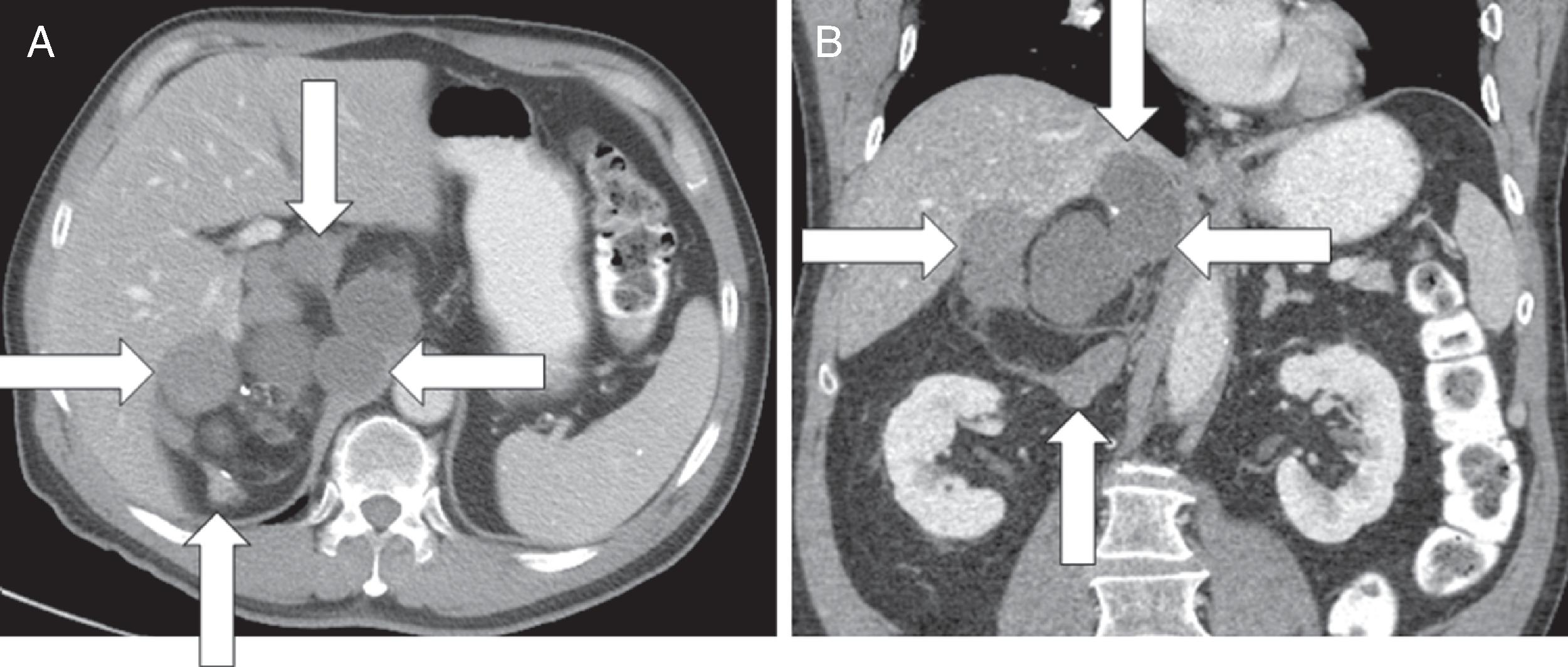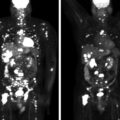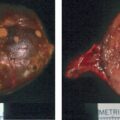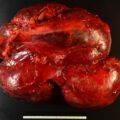Tumors of the adrenal gland that contain macroscopic fat are usually myelolipomas; however, the differential diagnosis includes lipomas, teratomas, angiomyolipomas, and liposarcoma. Herein we present a case of a patient with a large multilobulated lipomatous tumor that proved to be an adrenal teratoma.
Case Report
The patient was a 66-year-old man who had intermittent abdominal pain for about a month, which led to a computed tomography (CT) scan of the abdomen that demonstrated a large right adrenal mass ( Fig. 69.1 ). He had no paroxysmal symptoms. His weight had been stable. He had no signs or symptoms of Cushing syndrome. He had been diagnosed with hypertension 10 years previously. There was no history of hypokalemia. He did have a 30-year history of diabetes mellitus. His medications included metformin 1000 mg twice daily, glipizide 2.5 mg daily, lisinopril 40 mg daily, and pravastatin 40 mg daily. On physical examination his body mass index was 27.5 kg/m 2 , blood pressure 131/78 mmHg, and heart rate 98 beats per minute. He had no stigmata of an adrenal disorder. Heart and lung examinations were normal.

INVESTIGATIONS
The laboratory studies were normal ( Table 69.1 ). There was no biochemical evidence of functioning pheochromocytoma, aldosteronoma, or cortisol secretory autonomy.
| Biochemical Test | Result | Reference Range |
| Sodium, mmol/L Potassium, mmol/L Fasting plasma glucose, mg/dL Creatinine, mg/dL 8 am serum cortisol, mcg/dL 8 am serum ACTH, pg/mL Plasma metanephrine, nmol/L Plasma normetanephrine, nmol/L Plasma aldosterone, ng/dL Plasma renin activity, ng/mL per hour Prostate specific antigen, ng/mL 24-Hour urine: Metanephrine, mcg Normetanephrine, mcg Norepinephrine, mcg Epinephrine, mcg Dopamine, mcg Cortisol, mcg | 143 4.9 140 1.1 17 38 <0.2 0.3 4.0 4.8 1.0 105 279 44 4.8 185 17 | 135–145 3.6–5.2 70–100 0.74–1.35 7–25 1060 <0.5 <0.9 ≤21 ≤0.6–3.0 <6.5 <400 <900 <80 <20 <400 3.5–45 |
Stay updated, free articles. Join our Telegram channel

Full access? Get Clinical Tree








